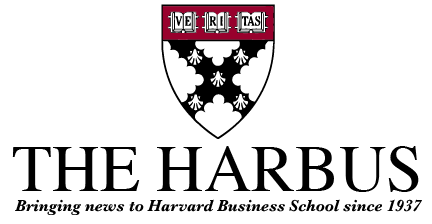Joint effort by professors at Harvard, Fuqua, and Tuck Business Schools offers tool for locating industrial pollution and environmental protection activities of over 20,000 facilities across the US
Have you ever wanted to see a picture of the largest polluter in the United States, find out what’s in that smoke from the company down the street, or learn more about what companies near you are doing to protect the environment? If so, your answers can be found on a new website released today and created by Harvard Business School Assistant Professor Michael Toffel and research colleagues from the Fuqua School of Business at Duke University and the Tuck School of Business at Dartmouth College, as well as students at Dartmouth.
The site, MapEcos.org, provides a balanced view of the environmental performance of over 20,000 industrial facilities across the US. The map portrays government data on toxic pollution as well as data the site’s developers are collecting from the facilities themselves about the latter’s efforts to protect the environment. Shaped by three faculty members and built by a group of entrepreneurial students, the site uses advanced mapping tools to reveal the pattern of industrial pollution across the entire United States.
“We wanted to move beyond finger pointing,” said Toffel. “We believe MapEcos is the first website that presents information about companies’ environmental performance while providing their managers with an opportunity to publicize their environmental practices and awards. By giving managers a voice, we can portray a more accurate picture of what actions are underway and what problems remain.”
Users of MapEcos can view maps or satellite imagery with industrial facilities color-coded according to their emissions levels and marked with a green ring in cases where a representative of the facility has provided data about its environmental management activities. Map users can search for facilities by name, location, corporate owner, industry, and emissions level. The site provides detailed information about the volume and health hazard of each facility’s toxic chemical emissions. It also provides context for this information by providing data about emissions levels and trends for comparable facilities. Where managers have provided data, MapEcos may provide information about operational policies, management systems, activities, staffing, and investment.
For those users more intrigued by pictures than numbers, the site allows users to find startling images of industrial facilities across the US, such as a magnesium facility surrounded by turquoise distillation ponds and a power plant with a huge plume of black smoke (see accompanying map images). Dramatic images such as these can be found for any region of the US by using a tool that lists the largest polluters in each county or state. Clicking a facility name moves the map to a close-up view.
The friendly interface of the site was motivated in part by the research objectives of the faculty sponsors. “MapEcos lets us create a kind of natural experiment, where we make information more accessible and then see how people respond,” commented Michael Lenox, an Associate Professor at the Fuqua School and Faculty Director of Duke University’s Corporate Sustainability Initiative. “We plan to examine which facilities, industries, and neighborhoods attract the most attention from MapEcos users. This information may help predict which facilities should develop robust mechanisms to engage their stakeholders.”
Professor Toffel explained another line of research the team hopes to pursue, “By observing how the thousands of facilities respond to our invitation to contribute information about their environmental management practices on MapEcos, we will better understand why some types of facilities choose to be more transparent than others.”
The faculty creators of MapEcos hope it provides a model for how academic research and public service can go hand in hand. “The three of us have been conducting research on business and the environment for years, and we wanted to find a way to do high quality research and make a difference at the same time,” commented Andrew King, an Associate Professor at the Tuck School of Business and currently a Marvin Bower Fellow at Harvard Business School.
To build the site, the faculty teamed with a group of young technical entrepreneurs, many of them Dartmouth College students: Evan Tice, Chris Hughes, Loren Sands-Ramshaw, and Jason Reeves. Tice (Dartmouth ’09) explained, “We built upon familiar Google Maps technology and other mapping software to give the public access to both detailed information about the environmental performance of individual facilities as well as more general information about the broad sweep of industrial activity across the US”. Hughes added, “We also wanted to allow managers to provide information about their environmental protection activities, and this necessitated creating a system for accessing and displaying data from a survey system at the Harvard Business School.”
King noted that the team named the site MapEcos “to emphasize our attempt to integrate information that is relevant both to ecology and economics. In this age of polarization, we wanted to take a stand for telling both sides of the story. The map will keep changing as more companies add information about their environmental improvement efforts.”
“We hope industrial pollution is only the beginning,” commented Lenox. “Most environmental problems come from habitat change, land use change, and distributed sources of pollution. Mapping will be even more powerful in studying and improving those issues.”
The MapEcos website can be found at www.mapecos.org, and a compendium guidebook with additional information about the site and the team is available at www.mapecos.org/about.

